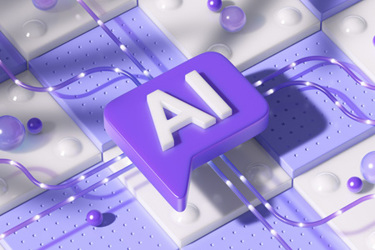Smarter CDMO Engagement With AI In Biologics And Cell & Gene Therapy
By Vadim Klyushnichenko, Outsourced Pharma Advisory Board Member

In biologics and cell and gene therapy (CGT), selecting and managing Contract Development and Manufacturing Organizations (CDMOs) has become a strategic imperative—but traditional approaches are struggling to keep up. Manual workflows, siloed data, and fragmented oversight slow development and increase risk.
As advanced therapies grow more complex and global, inefficiencies in CDMO operations can lead to costly delays and compliance failures. Artificial intelligence (AI) is now reshaping this landscape. By integrating predictive analytics, NLP, and robotics, AI enables faster selection, smarter oversight, and proactive risk management, offering a more agile and resilient framework for modern CDMO partnerships.
Traditional Selection Process And Its Limitations
Selecting a CDMO for biologics or CGT is a multi-step, technically demanding process that is often slow and inefficient. It begins with an NDA, followed by a detailed Request for Proposal (RFP) that outlines project scope, manufacturing strategy, timelines, and technical specifications. In biologics and CGT, these RFPs require a high level of detail, including:
- Drug substance/product quantities and quality targets
- Cell line development, validation, and banking plans
- Process development expectations, including engineering and scale-up runs
- Analytical and assay validation strategies
- Reference material qualification
- Stability study designs
- Formulation and Fill-&-Finish
Following proposal review and scoring, sponsors conduct audits, technical reviews, and finalize legal agreements, including the Master Service Agreement (MSA), Quality Agreement (QA), and project-specific Statement of Work (SoW).

Figure 1: Key Milestones in CDMO Selection and Contracting Workflow
Despite its importance, this process is hindered by major inefficiencies:
- Fragmented global supply chains and inconsistent regulatory environments
- Siloed data and subjective decision-making
- Manual workflows prone to error and delays
- Slow response times, especially under accelerated timelines
As CGT and biologics projects grow in complexity, traditional selection models can no longer keep pace. There is an urgent need for AI-driven tools to streamline decisions, enhance data integration, and mitigate risk.
AI In CDMO Selection
Artificial intelligence is revolutionizing how biopharma companies evaluate CDMOs, particularly in the complex domains of biologics and CGT. By tapping into vast, previously siloed data, AI enhances both the speed and precision of partner selection.
Natural Language Processing (NLP) tools mine unstructured sources, such as FDA/EMA inspection reports, warning letters, and scientific literature, to identify compliance trends and technical competencies. This enables early detection of issues like sterility failures or batch inconsistencies.
Machine learning models further refine selection by scoring CDMOs on key metrics, including:
- Biosafety level capabilities (e.g., BSL-2/3)
- Use of single-use bioreactors or continuous systems
- Historical yield and scalability data
- Infrastructure for cell banking, cryopreservation, and aseptic fill-finish
These AI-powered insights help align sponsors with CDMOs that meet their specific technical, regulatory, and operational needs, reducing decision time and increasing the likelihood of project success.
Traditional CDMO Due Diligence
GMP due diligence is a critical component of selecting a CDMO, especially in biologics and CGT, where technical complexity and regulatory expectations are high. The process typically involves evaluating operational readiness, infrastructure, compliance posture, and communication workflows.
Site and Facility Assessment
Walkthroughs—virtual or in-person—offer insight into facility layout, segregation controls, equipment state, and environmental systems. Common red flags include:
- Dispersed sites for process and QC labs, increasing cost and complexity
- Aging equipment or limited automation that slows throughput
- Shared or crowded spaces raising contamination risk
- High operational overhead from urban settings or energy-intensive systems
- Lack of specialization in CGT modalities
Organizational and Communication Review
Sponsors assess the CDMO’s org structure, leadership-to-staff ratio, and the presence of dedicated CGT teams. Strong project management, clear governance frameworks, and reliable responsiveness are essential to ensure smooth execution and timely documentation.
Quality Systems and Regulatory Track Record
The core of diligence lies in examining quality systems and regulatory history, including:
- Deviation/CAPA management and batch review workflows
- Change control and data integrity practices
- Audit outcomes, regulatory inspection records (e.g., 483s, warning letters)
- Experience supporting INDs and global filings
While comprehensive, this process is often manual, time-consuming, and reactive. These limitations underscore the need for AI-enhanced due diligence to provide faster, more predictive, and data-rich assessments.
AI-Enhanced Due Diligence In CDMO Selection
As biologics and CGT programs grow in complexity, traditional due diligence often falls short, struggling to keep up with data volume, speed, and risk visibility. Artificial intelligence (AI) is now augmenting these processes with tools that offer faster, deeper, and more predictive assessments.
NLP for Regulatory Intelligence
Natural Language Processing (NLP) extracts insights from inspection reports, regulatory filings, patents, and publications. It highlights patterns such as sterility failures or recurring citations and identifies a CDMO’s technical strengths (e.g., viral vector production, cryopreservation).
AI-Based Risk Scoring
Machine learning models analyze performance data, facility infrastructure, and even financial indicators to generate risk scores. These help sponsors prioritize CDMOs with proven capabilities and lower operational or regulatory risk.
Smart Auditing Tools
AI supports pre-audit planning and post-audit review with:
- Computer vision analysis of facility layouts
- Dynamic, learning-based audit templates
- Virtual audit tools with real-time anomaly detection and auto-reporting
Knowledge Graphs for Network Risk
AI-generated knowledge graphs map relationships among CDMOs, subcontractors, regulators, and sponsors revealing:
- Subcontractor dependencies that may affect lead times
- Shared compliance issues across networks
- Geographic or organizational concentration risks
AI doesn’t replace human judgment, it enhances it. By surfacing hidden risks and automating repetitive analysis, AI empowers sponsors to make faster, more informed CDMO decisions in an increasingly high-stakes environment.
AI-Driven Risk Management In Complex Therapeutics
Biologics and cell/gene therapies carry inherent risks that extend beyond traditional GMP boundaries, from cold chain fragility to geopolitical instability. AI is emerging as a critical tool to anticipate and manage these complex variables more proactively.
For highly sensitive modalities like autologous cells, viral vectors, and lipid nanoparticles, AI can predict product integrity risks during transit by analyzing historical shipment data, sensor inputs, and environmental conditions. These models can recommend ideal shipping windows, optimize packaging strategies, and trigger alerts in response to real-time deviations, reducing the likelihood of costly, patient-impacting batch failures.
AI also enables advanced supply chain risk mapping by integrating live logistics feeds, weather patterns, vendor performance, and geopolitical signals. It helps visualize vulnerable nodes, simulate disruptions, and recommend alternative sourcing or routing strategies.
On a broader scale, AI platforms can assess infrastructure and location-specific risks across global manufacturing sites, scoring them based on factors like energy reliability, labor volatility, or regional instability. This allows sponsors to shift from reactive issue management to predictive oversight, enhancing the resilience and agility of CDMO partnerships in an increasingly dynamic therapeutic landscape.
Robotics In CGT Manufacturing
Cell and gene therapy manufacturing remains deeply manual, requiring high-skill labor for complex, delicate procedures. This dependence creates variability, limits scalability, and increases contamination risk. Robotics is rapidly emerging as a solution to these challenges, offering greater precision, sterility, and consistency across CDMO operations.
Robotic systems are now used to automate cell culture, aseptic fill-finish, cryopreservation, analytical sampling, and material handling, bringing efficiency and repeatability to tasks traditionally done by hand. Platforms like Cellares’ Cell Shuttle, Ori’s Iro, and Lonza’s Cocoon demonstrate how closed, automated systems can scale both autologous and allogeneic processes.
The integration of AI further enhances robotics, enabling real-time monitoring of cell morphology, environmental conditions, and task sequencing. This combination supports predictive maintenance, dynamic scheduling, and improved coordination in patient-specific workflows.
Adoption of robotics is becoming a key differentiator in CDMO selection. Companies deploying these technologies are demonstrating faster turnaround times, higher batch success rates, and improved GMP compliance. As industry leaders invest in “GMP-in-a-box” platforms and digital twin integration, robotics is poised to industrialize CGT manufacturing and support scalable, consistent production from clinical to commercial stages.
---------
 Vadim Klyushnichenko, Ph.D., is VP Pharmaceutical Development & Quality, California Institute for Biomedical Research (Calibr)
Vadim Klyushnichenko, Ph.D., is VP Pharmaceutical Development & Quality, California Institute for Biomedical Research (Calibr)
